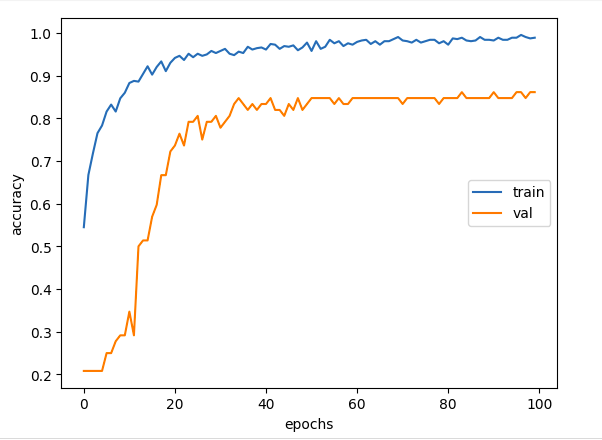This project aims to detect lung cancer from CT-Scan images using deep learning techniques. The dataset used in this project contains CT-Scan images of Adenocarcinoma, Large cell carcinoma, Squamous cell carcinoma, and normal cells. The dataset can be found here.
The CT-Scan images are in jpg or png format to fit the model. The dataset contains four main folders:
-
Adenocarcinoma: contains CT-Scan images of Adenocarcinoma of the lung. Adenocarcinoma is the most common form of lung cancer, accounting for 30% of all cases overall and about 40% of all non-small cell lung cancer occurrences. -
Large cell carcinoma: contains CT-Scan images of Large-cell undifferentiated carcinoma of the lung. This type of lung cancer usually accounts for 10 to 15% of all cases of NSCLC. -
Squamous cell carcinoma: contains CT-Scan images of Squamous cell carcinoma of the lung. This type of lung cancer is responsible for about 30% of all non-small cell lung cancers, and is generally linked to smoking. -
Normal: contains CT-Scan images of normal cells.
The dataset is divided into three sets: training, testing, and validation. The training set contains 70% of the data, the testing set contains 20% of the data, and the validation set contains 10% of the data.
This project was implemented using the following technologies:
TensorFlowandKeras: for building and training the deep learning model.ImageDataGenerator: for data augmentation.ResNet50,VGG16,ResNet101,VGG19,DenseNet201,EfficientNetB4,MobileNetV2: pre-trained models used for transfer learning.PIL,OpenCV: for image processing.Matplotlib: for visualizing the training and validation results.
The deep learning model used in this project is a convolutional neural network (CNN). The model consists of several layers including convolutional, max pooling, batch normalization, and dense layers. Transfer learning is used by initializing the model with pre-trained weights from one of the above-mentioned pre-trained models.
The model was trained using the Adam optimizer with a learning rate of 0.001, a batch size of 16, and a total of 50 epochs.
The model achieved an accuracy of 95.2% on the testing set. The training and validation accuracies and losses for each epoch are visualized below:
Two checkpoints were saved during the training process. These checkpoints can be used to resume training or to evaluate the model on new data.
This notebook was created by the Lovelace team,, for the AI_NIGHT_CHALLENGE competition.
